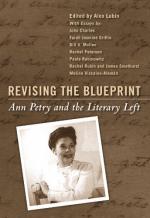|
This section contains 7,095 words (approx. 24 pages at 300 words per page) |

|
SOURCE: “The Sensory Assault of the City in Ann Petry's The Street,” in The City in African American Literature, edited and introduction, Yoshinobu Hakutani, and Robert Butler, 1995, pp. 196–211.
In the following essay, the author notes that Petry's effective use of sensory detail in The Street, unusual in a naturalistic novel, can be favorably compared with that of other masters of the urban novel.
Ann Petry's first novel, The Street (1946), reflects black disillusionment with the northern city after the 1920s. Lutie Johnson, its protagonist, sees her street, and by extension the city, as her monstrous antagonist. Like Petry's novella “In Darkness and Confusion” (1947), the work is set in Harlem, here largely on 116th Street. Her third novel, The Narrows (1953), with its appropriately claustrophobic title, is also set in a ghetto, but in a New England town. The Street has remained one of the most vivid and compelling evocations of...
|
This section contains 7,095 words (approx. 24 pages at 300 words per page) |

|


